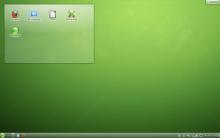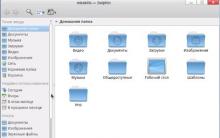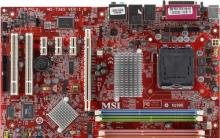Part 1: Library Management, Book Reading, Library Sharing
The e-book market meets the demand of a very demanding consumer. What is even more pleasant, these devices are becoming more affordable and technologically advanced. However, along with support for many document formats, functional e-book software is missing. As a result, the user is content with limited out-of-the-box tools.
One of the most pressing issues is the creation of an electronic library on a computer, followed by synchronization via USB or wireless connection. Equally important is the export of books in a format suitable for reading on the device. With such tasks, the Caliber program will help you cope.
Actually, the incompatibility of formats, software and operating systems served as an impetus for the development of Caliber in 2006. Kovid Goyal, the author of the project, has created an LRF book converter that is relevant for Sony Reader. Since then, the program has acquired many features and runs on Windows, Mac OS and Linux (the review will consider the version for Windows). The main features of the program are revealed in the following areas:
- Library management
The program allows you to store books of various formats, combine them into collections, edit metadata (information about the author, publisher, etc.), search for information on the library, perform operations with files, such as import, export, delete. - Reading books
Caliber can be used to read or preview books in CBZ, CBR, CBC, CHM, DJVU, DOCX, EPUB, FB2, HTML, HTMLZ, LIT, LRF, MOBI, ODT, PDF, PRC, PDB, PML, RB, RTF, SNB formats , TCR, TXT, TXTZ, with easy navigation and page display settings. - Web server
The back end of Caliber is one of the most interesting features, thanks to which users can access the digital library through a browser. The web shell is necessary when working with a number of devices over a wireless connection, as well as for organizing access to the library over a local network or via the Internet. - Collecting and saving news from Internet sources
At first glance, this feature is purely RSS aggregators. In the case of Caliber, it is possible to create a file from RSS feed news for reading on an electronic device, including on a schedule. - Device sync
Caliber supports a variety of devices from well-known vendors and allows you to download books in a variety of ways: via the Internet, over a local network, or directly when connected via a USB cable. - Converting e-book formats
The program has a powerful converter that works with popular file formats (see above) and exports to AZW3, EPUB, FB2, OEB, LIT, LRF, MOBI, HTMLZ, PDB, PML, RB, PDF, RTF, SNB, TCR , TXT, TXTZ. Thanks to this, the book is easy to save in the desired format and immediately send it to your device or send it by email. - Plugin Support
It is important that Caliber supports extensions. Thanks to this, users have the opportunity to improve the functionality of the program by enabling this or that option freelance, through the plug-in. If desired, you can write your own add-on corresponding to the developer's site.
Documentation is only available in English, and not all key features have been explored in the numerous Caliber reviews. At the same time, it cannot be said that a news aggregator or a web server is of less interest than a book converter. Therefore, it makes sense to consider in detail the tools of the program.
First launch of Caliber
At the first stage, the Calibri setup wizard offers to choose a place to store books, as well as localization. The list contains Russian, but the translation is poor quality. For this reason, during the acquaintance with the program, there are moments of misunderstanding. Although, for the most part, the translation is acceptable.
The second step is to select a device to sync with Calibri. An impressive number of devices from such manufacturers are supported: Amazon, Android, Apple, Barnes & Noble, SONY (see screenshot). If the device is not listed, you can select a generic profile (Generic).
According to the choice, access to some options and additional information is opened. For example, in order to synchronize with applications on iOS, it may be necessary to configure the Caliber virtual server in the future (see the corresponding chapter of the review), which will be reported. In the case of Kindle, if books are sent via the Internet, you can specify the recipient's email address.
After closing the dialog, the program starts. A few words need to be said about the interface. The fact is that most of the comments of users are not related to the functional, but to the visual side of the program. The Caliber shell uses a cross-platform library, as a result of which the "non-native" interface is somewhat out of the general style of Windows. A more significant drawback is not always smooth scrolling of lists and opening dialogs, slow responsiveness in general.
However, these “roughnesses” are fully compensated by the functionality of Caliber and cross-platform in particular: here you can recall the supported devices and OS, between which import, export and synchronization are possible.
The Caliber toolbar has a clear delineation of functions, all actions are grouped and placed as buttons on the Actions panel at the top of the window. Full screen mode allows you to see all available commands on the panel, but in a more compact mode, one bar is not enough.
Icons can be scaled down, and button placement is customizable via the Toolbar section. Modifications also lend themselves to context menus, columns and other interface elements.
Library management
The main window of the program is represented by the library, which is the core of the program and its main tool. In the left pane, you can filter by attributes and search (tag browser). The central column is reserved for the list of books. On the right - information on the selected list item, taken from the metadata of the book. Switching modes are available at the bottom of the window, where you can additionally hide one of the side panels or switch the book display mode - in the form of covers or a grid. Thanks to this, the panels are flexibly configured, making viewing books informative and convenient.

Initially, most of the columns in Caliber are activated: author, date, size, rating, etc. In order to change the established order, you need to use the context menu by clicking on any list heading, or drag the column heading to the desired location. Using the template language, you can create columns with your own data, including metadata ("Add custom column" option).
There are several ways to add books. The most obvious is the Add Books button on the toolbar. From the available options of the drop-down list - adding a book from one directory (option 1), adding taking into account subdirectories (option 2) or several (option 3) books per directory. It is also possible to create an empty entry or add a book by number.
It has been noticed that to add a small number of books, it is enough to drag the books into the window, however, adding folders and directories is possible only through the interface. Although you need to be careful, because as a result of illegible imports, you will have to deal with cleaning the list of unnecessary elements. It also makes sense to define a file ignore list in the Add Books menu, Automatic Add tab.
The second way to replenish the library is to search for and purchase books from public and commercial sources (the "Download Books" action). Caliber only provides a wrapper for searching by title, author, and keywords. The remaining functions (purchase, download) are available through the browser, after going to the site. The list of stores is customizable, by eliminating unnecessary elements, you can optimize your search.
Russian-language resources, with the exception of those placed at the end of the list, are clearly not enough. The available search in Russian does not cover the widest area: in fact, this is information from.


When you add a book, the files are automatically saved on your computer in subfolders sorted by the "Author" and "Title" attributes. There is no point in adding files to the Caliber directory yourself: they will be deleted.
Metadata is stored in a separate metadata.db file for each book, which is also convenient for moving the database, creating a backup, or, say, synchronizing with Dropbox or similar services. However, with Google Drive, at the time of writing, the . It's easy to import or export libraries to another computer - just move the book folder and specify it in the step-by-step setup wizard.
Thanks to virtual libraries, books can be organized into collections. The interface supports tabs ("Virtual Library - Show virtual libraries as tabs"), which makes managing a large library even more convenient. As a result, the necessary books will always be at hand and the search is not so in demand.
By the way, searching in several virtual libraries is not supported, it is carried out only in a common database. Otherwise, this feature is integrated into Caliber throughout. Above the central column, a quick search is available, it acts as a filter. Another way to view is the Quickview mode: by highlighting a value in a column and pressing Q, a list is available according to the selected criterion: for example, by author, publisher, genre.

Advanced search (button to the left) allows you to search by content as well as fields. It is allowed to use logical operators, regular expressions, tags in the input line. Requests can be saved for future use (use the field in the upper right corner).
Metadata editor
Experience with Caliber suggests that search is particularly effective when using metadata. The more information you have about a file, the more likely it is to be found quickly by the tag browser.
In the edit dialog, fields such as title, author, series, tags, text/HTML comment, and others are available. If there is an ISBN number of the book, the easiest way to get the necessary information is from the Internet using the data from isbndb.com, Amazon, Google Books services. In the settings, sources are preselected and fields for importing information are marked, the downloaded metadata can be checked against previous information.

In general, there are several things that come in handy when working with metadata. First, books can be edited in turn by selecting them in the list and pressing the edit button. When importing data from the Internet, it is enough to select files, select the command "Download metadata and covers" - all files will be processed in turn. The second point is that even in manual mode, many fields do not have to be filled in from scratch, it is enough to use drop-down lists in the fields. And, thirdly, the editor supports search and replace, as well as regular expressions.
Reading books in Caliber
The Caliber Viewer is available in a separate window by clicking the "View" button on the action bar. A file for reading can be selected both in the library window and directly through the application menu.

At the top is the navigation area, from where you can jump to a position in the text or by pointer. There is a text search. Navigating through the chapters is possible through the slide-out panel "Contents", the corresponding button is located to the left of the viewing area. It is possible to create bookmarks in the document. Reference mode allows you to find out the coordinates of a section of a paragraph in the form of a number when you hover the cursor over the text, then it is entered in the transition field by the pointer.
You can maximize the window to full size or switch to full screen mode. Pages are turned by means of keys or buttons on the panel. It is possible to switch to multi-threaded mode (without pagination), but for some reason it is impossible to switch to two-page display. There are also no other options that are quite obvious to the viewer: fit to the width or size of the window. Of the other "little things" that are familiar by their presence in e-books: there is no option to switch to "night" reading mode, you cannot leave notes in the book.
On the other hand, in this app for Caliber, there are many visual options available: choosing a typeface, adjusting the position of text on the page, colors, background, and flipping behavior. The display of pages is also controlled using easy-to-understand CSS syntax, you can add a style sheet in the "Custom Style Sheet" tab. On the Mobileread themed forum, there are ready-to-use examples that will be useful to all those who are not familiar with CSS syntax.
Perhaps the viewer's greatest strength is its support for multiple formats. However, reading PDF files is problematic due to the long opening, slow scrolling of content and incorrect display.

DJVU format files do not open even if the corresponding plug-in is present in Caliber, although they are perfectly recognized in .
Thus, in order to step over to a qualitatively new level, this application lacks several regular options and conflict-free recognition of at least DJVU and PDF formats.
Library Sharing
Sharing may be needed if the book needs to be transferred to another device (Kindle, Android, iOS) over a local network, over a wireless connection, or over the Internet. In the case of iOS, the server is needed to read books to applications such as Stanza or Marvin.
The server does not actually require any prior configuration. As a last resort, you should check your firewall or antivirus settings to see if the port being used by Caliber is being blocked. The network access configuration is located in the settings section of the same name. Here you can also set the username and password for connection. When organizing access to the library via the Internet, you need to configure port forwarding on the router.
To start the server, use the "Connect / Sharing - Start Content Server" command. As a result, the contents of the server are available at http://:8080/.

Each book has a permanent address and a description based on metadata. The user can navigate through the content: by virtual libraries, tags, publishers and other attributes, track new items. Search is supported - in earlier versions there were problems with Russian-language names, now they are not. Various display modes are provided, including those for mobile devices.
As you can see, the web server is quite simple, you can use it for personal purposes or share books with friends. For a “full-fledged” version of the server, at least access rights and advanced security settings are not enough. But this is clearly not a priority function of the program.
Another networking feature of Caliber is the distribution of e-books by email. For this, a mailing list is used. When sending, books can be converted in one or more specified formats, specified with a separator.
An application is provided for Android devices, with which you can create a wireless connection between Caliber and your phone.
Dropbox is a cloud file storage service. Since I live on multiple machines, this makes life a lot easier because the full library is always at hand. However, most people do not need such synchronization.
Caliber - in fact, is the main tool for cataloging books.
First of all, to work with Caliber, you need to download it from the official website: http://caliber-ebook.com/download .
Installation is no different from installing most other programs on your computer.
During the installation process, Caliber will ask for information about your device on which you will read books (all these settings can later be changed in the program itself). In my case, this is an Amazon Kindle:
The next step is to specify the e-mail address to which the program can send books. This function is intended, first of all, for electronic devices that are bound to a specific email address: you send a book to this email address, and the book is automatically downloaded to the device. Kindle supports this mode, but to be honest, I have never needed it in my life. So I skip the next step by immediately pressing the button " D alley >» 
At the last step, click "Finish" and run the program. The main window for working with the program opens with the first book already downloaded - instructions for working with Caliber (though in English). 
A separate directory is created to store your files. Its location can be changed in the settings, but in most cases this is not needed. All book files will now be located inside this directory. Caliber itself organizes the necessary directory structure - you can no longer return here and work with the program through its interface.
The next step is to download the book. On the Internet, there are a large number of both paid and free libraries that store books in various electronic formats.
I find most of the books I need on Flibust.
We find a book on the site. 

The beauty of Caliber is that it supports a huge number of different libraries and, when downloaded to an electronic device, automatically converts the source file into the desired format.
That is, for example, if your book does not support epub, but supports mobi, this does not bother you anymore: when you save a book to your device, it will automatically be transferred to mobi. Native to the Amazon Kindle is the mobi format, so if possible, I download it. 
We return to Caliber, click "Add Books" on the toolbar 
In the window that opens, specify the path to the downloaded book, click OK.
The book is loaded into the Caliber database. The downloaded file can be deleted - it is no longer needed.
Now, if desired, you can edit the properties of the book. I specify the exact title and author for ease of searching and sorting, as well as a cover for beauty. 

Now we connect an electronic device (if it has not been connected before): an icon in the form of an electronic reader will appear in the toolbar, which means that the book is connected and Caliber sees it.
Russian Caliber is a powerful free e-book reader that provides a wide range of possibilities for organizing your e-library. Also, the new Caliber allows you to convert e-books from one format to another, which allows you to convert PDF, RTF, ODT, HTML, etc. files into formats suitable for reading on various portable devices.
With the Caliber 4.9.1 app, you can read books, edit book metadata and covers, send files to connected devices, and more. The program supports all the most popular e-book formats and can work with a wide variety of readers, from Amazon Kindle to Android smartphones.
The main features of the Caliber 2020 program: |
|
|
|
|
|
|
|
|
|
More:
Not without the conversion function. It can be done manually, or you can instruct the Caliber application in Russian to automatically convert books to a supported format when transferred to another device. The list of formats supported by the application includes both common EPUB and TXT, and little-known ones like LRF and MOBI. In general, finding a book in a format that the Calibri program could not “swallow” is almost impossible.
If you update Caliber rus, you can manage downloaded books and transfer them between devices. The application also contains a built-in "viewer", design creation tools, which allows you to edit metadata.
[hide]
Changes in the latest version of Caliber 4.9.1:
| Edit book: |
|
|
| View toolbar: |
|
| Comment editor: |
|
| PDF Output: |
|
| Viewer: |
|
| Viewer: |
|
| Book details panel. |
|
|
| Dark Mode: |
|
| Improved news sources: |
|
Learn how to work with Caliber in this article. Although you can find almost any book on the Internet in the most common formats (EPub, FB2, Mobi), we still occasionally encounter such a problem as converting one format to another. In addition, managing the library is much more convenient on a computer than in a reader. There are many reasons for that. User-friendly interface, file processing speed, device capacity. Even if your device allows you to store thousands of books, the indexing speed of such a library will still be lower than on a regular computer. And it will not be so convenient to search for the book you need in the reader. It is better to store the library on your computer, and send several books that you are currently reading to the reader. And this is where programs come in handy. Consider today one of these programs - Caliber.
The program is free, which is undoubtedly one of the advantages. In addition, it is easy to install and has a convenient Russified interface. To download the program, go to its official website https://caliber-ebook.com/ and click on the "DOWNLOAD CALIBER" button
We select the necessary system on which we will install the program.

In the window that opens, select the download of the latest version of the program - Download caliber ...

We find the downloaded installer file "caliber-x.x.x.msi" on the computer (usually in the "My Documents / Downloads" folder) and double-click it. Number х.х.х. changes as new versions are released.
We get acquainted with the license agreement, agree with it and continue the installation. When finished, run the program by clicking the "Finish" button.

The program setup wizard will open. At the first step, you can select the installation language and the folder to store the library.


If you chose a Kindle device, then you can skip the next step - in fact, it duplicates sending books to Kindle via email. Just click the "Next" button.

Everything. This completes the program setup - you can proceed to use. Click the "Finish" button to start the program.

The main program window will open.

If you already have saved books on your computer, you can add them to the Caliber library. Click the "Add books" button and select the books you want to add to the library.

Or click the arrow next to the "Add books" button and select search and add books from the specified folder. In this case, if filters by book formats are not configured, then all documents from this folder that can only be read will be added.

You can also use this button to configure the automatic addition of books to the library. To do this, select the lowest item "Set up adding books" in the drop-down list and select the tab "Automatic addition"

Next, specify the folder in which we will store the books, click the apply button and restart Caliber. Now we can immediately upload files from the Internet to this folder, and they will be displayed in the Caliber library. Now we have a library, and we can browse it as we like - by authors, languages, series, formats, etc.

By double-clicking on the title of a book in the library, you can read it using the built-in reader. But we are interested in using the program in conjunction with our electronic reader, so let's move on to the next step - connecting the reader to the computer. By connecting our device to the computer using a USB cable, we will see that in the top menu we have two additional buttons “Send to device” and “Device”

By clicking on the "Device" button, we will see the contents of our reader and will be able to copy books from it to the Caliber library. If we want to copy a book from the library to the reader, then go to the library again by clicking the "Library" button. We select the book or books that we want to send to the reader and click the "Send to device" button (moreover, if the device has a memory card, then you can choose the place where the book is stored - in the main memory or on the memory card).

In the lower part of the program window, you can track the execution of the task:
If for some reason we could not find a book in a format supported by our device, then we can use Caliber to convert it to the format we need, and this is done, as they say, on the fly - i.e. at the same time as sending the book to the device. We also select a book in the library and send it to the device. The program will automatically convert it to the required format and load it into the reader (of course, this does not apply to such formats as PDF and DjVu). After that, you can safely disconnect the device from the computer by selecting the menu item "Eject device"

Of course, this is not all that this wonderful program is capable of. This article describes only the basic actions with the Caliber program that you may need to comfortably manage your library and convert files from one format to another. You can independently continue to explore all its features and get the most out of its use. Thanks for attention! Good books and happy reading!
Caliber is a free program with a wide range of features designed to work with e-books in various formats. The program can be used both for reading and as a converter, it is also ideal for creating and managing a collection of books in electronic form.

Caliber features and capabilities
- Own database with information about books (author, title, cover, tags, release date, series, publisher, etc.);
- Obtaining information about the book via the Internet by ISBN;
- E-book - an application for reading electronic books;
- Built-in converter. Input supported formats: CBR, CBZ, CBC, EPUB, CHM, FB2, LIT, HTML, LRF, ODT, MOBI, PDB, PML, PDF, IRF, PRC, RTF, RB, TXT, TCR. Output formats: FB2, EPUB, LIT, MOBI, LRF, OEB, PDB, PML, RB, IRF, PDF, RTF, TXT, TCR;
- Synchronization with devices for reading e-books: Amazon, Apple, Android, Kobo, Onyx, PocketBook and others;
- Automatically receive news from popular websites and news agencies: The Economist, New York Times, The Guardian, BBC News, National Geographic, Rossiyskaya Gazeta, Vedomosti, Ekho Moskvy, Computerra, 3DNews, iXBT and others (source selection is optional - sorting by country and languages)
- Access to the library from any mobile device (via browser);
- Work offline;
- Support for plugins that expand the capabilities of Caliber;
- Management via command line;
- Support for "Hot Keys";
- The presence of a portable version -;
- Multilingual localization - more than 40 language packs, including Russian and Ukrainian.
Download Caliber
The latest version of Caliber for Windows 10, 8, 7, Vista operating systems (32 and 64-bit) is available for download on our website.
Download Caliber for free, without registration.
Spoiler (Download Caliber for Windows XP)
Please note that the latest version of Caliber is not compatible with Windows XP, therefore, to work with the program on this operating system, the developer recommends using version 1.48 (compatible with all versions of Windows XP 32 and 64-bit):
[hide]
Caliber is a free program with a wide range of features designed to work with e-books in various formats.
Version: Caliber 4.9.1
Size: 103 / 116 MB
Operating system: Windows 10, 8.1, 8, 7, Vista
Russian language
Program status: Free
Developer: Kovid Goyal
What's new in version: List of changes











Wargame: Red Dragon not starting?
Sad escobar "The face of the judicial system of Ukraine"
ROME Total War - how to unlock all factions?
How to turn off the TalkBack feature?
Overview of alternative firmware HTC Desire A8181 Bravo How to install the firmware file for HTC Desire